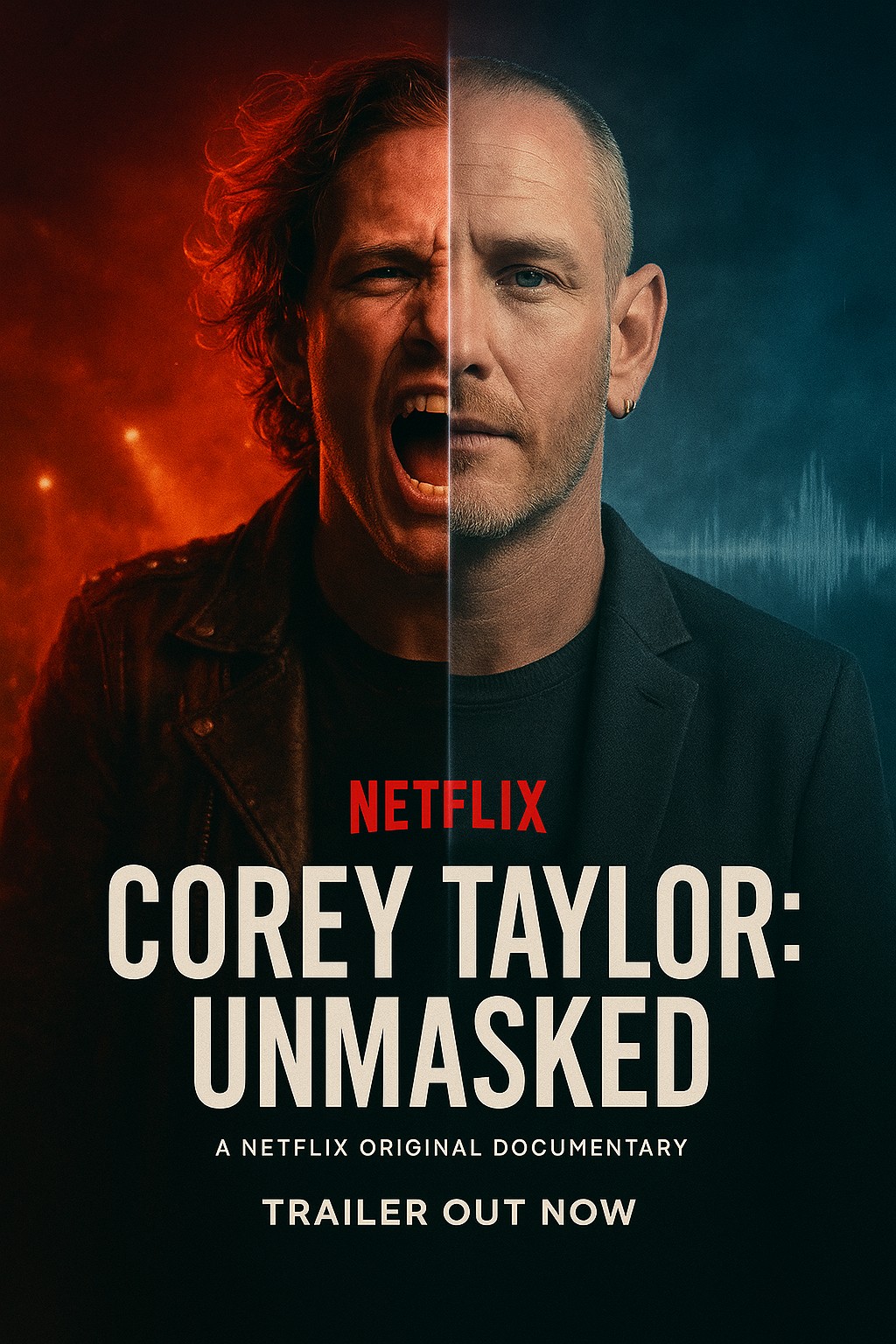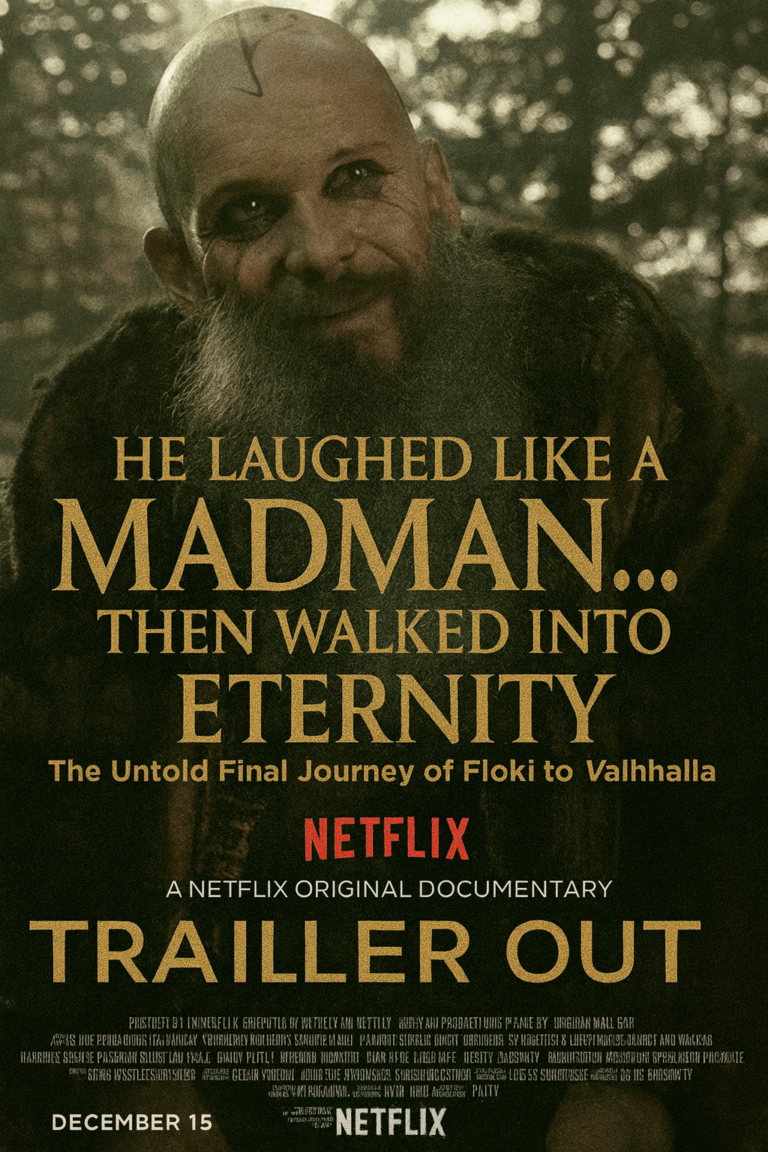
Corey Taylor has always been more than just a frontman. His voice, his words, and his energy have shaped the sound of modern rock and metal for over two decades. Now, Netflix is peeling back the mask — both literal and metaphorical — in a gripping new documentary series titled Corey Taylor: Unmasked. The series promises to explore the life, mind, and legacy of the Slipknot and Stone Sour icon in a way fans have never seen before.
The opening moments of the documentary set the tone with haunting visuals of Taylor walking through his hometown of Des Moines, Iowa. His narration, calm yet weighted with reflection, introduces the story not of a rock star, but of a man shaped by trauma, rage, resilience, and creativity. From his troubled youth to his meteoric rise in Slipknot, Netflix frames his journey as both a personal and artistic odyssey — a story of survival through sound.
Each episode focuses on a pivotal chapter in his life. Early episodes delve into his adolescence — the pain, abandonment, and self-doubt that became the emotional core of his lyrics. Viewers witness the evolution of a young outcast who turned his anger into art, writing songs that resonated with millions. Through interviews with friends, family, and bandmates, the series pieces together the emotional mosaic that defines Corey Taylor’s identity.
As the narrative moves forward, the series captures the chaos and catharsis of Slipknot’s rise to global fame. Rare backstage footage shows the band’s early tours — the exhaustion, the passion, and the sheer power of their performances. Netflix balances the spectacle with introspection, offering raw insights into the pressures of fame, mental health struggles, and the complexity of maintaining authenticity in an industry that often demands masks.
One of the most compelling aspects of Corey Taylor: Unmasked is its exploration of duality — the contrast between the aggression of Slipknot and the introspection of Stone Sour. Taylor opens up about his need for both outlets, explaining how one allowed him to scream his demons out, while the other helped him heal through melody. The documentary’s sound design mirrors this duality, shifting between thunderous metal anthems and delicate acoustic tracks, giving viewers a sensory reflection of his artistic range.
The cinematography is equally captivating, blending performance footage with dreamlike recreations of Taylor’s memories. Scenes of him writing alone in hotel rooms are juxtaposed with explosive arena moments, capturing the balance between solitude and spectacle that defines his life. Netflix’s production brings cinematic weight to the story, but it’s the emotional honesty of Taylor’s narration that makes the series truly powerful.
The series premieres on Netflix on November 28, 2025, marking a milestone for both Corey Taylor and fans who’ve followed his journey from underground obscurity to international recognition. The release date holds symbolic weight — coming nearly 25 years after Slipknot’s debut album first unleashed its chaos on the world. For longtime followers, it feels like a full-circle moment, a celebration of endurance and evolution.
In later episodes, Unmasked delves into Taylor’s philosophy on music, creativity, and life after pain. He speaks candidly about sobriety, fatherhood, and finding balance in a world that once consumed him. The series also highlights his ventures into writing, acting, and public speaking, showing that his voice carries power far beyond the stage. Each confession feels deeply personal, shedding light on a man who has learned to live without hiding behind the persona.
The documentary also pays tribute to the fallen members of Slipknot — Paul Gray and Joey Jordison — with heartfelt segments that reflect on grief, legacy, and brotherhood. The band’s surviving members share emotional recollections, illustrating how those losses reshaped the group’s spirit. These moments bring vulnerability to the forefront, reminding viewers that even legends carry scars.
As the tenth paragraph unfolds, Corey reflects on how far he’s come, standing at the crossroads between his past and future. “November 28, 2025,” he says, “isn’t just another date. It’s proof that I made it out alive — and I’m still loud about it.” His words linger like an echo, a declaration of survival from an artist who turned his pain into power.
The final episodes shift tone toward optimism, focusing on Taylor’s present and future. Netflix captures his time in the studio recording new material, where creativity feels like rebirth. The series ends with him performing an acoustic version of “Snuff” under soft stage lighting, his voice cracking but resolute. The audience remains silent until the last note fades — a perfect metaphor for the quiet strength that defines him.
Corey Taylor: Unmasked is not just a rock documentary — it’s a story of identity, healing, and artistic evolution. It reminds viewers that even behind the heaviest screams, there’s a heart that beats with truth. Netflix has created something extraordinary — a portrait of a man who faced his darkness, shared it with the world, and found light in the noise.



